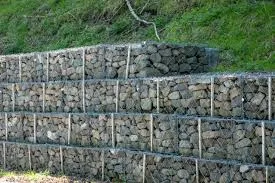-
 Phone:
Phone: -
 Email:
Email:

Effective Solutions for Chain Link Fence Repair and Maintenance Tips
Chain Link Fence Repair A Comprehensive Guide
Chain link fences are a popular choice for property owners due to their durability, functionality, and cost-effectiveness. However, like any structure, they can be subject to wear and tear over time. Whether it's due to weather conditions, accidental impacts, or rust, knowing how to repair your chain link fence is crucial for maintaining both security and aesthetics. In this article, we’ll walk you through some common issues and effective solutions for chain link fence repair.
Common Issues with Chain Link Fences
1. Rust and Corrosion Over time, chain link fences can develop rust, especially if they are not galvanized. Rust not only weakens the structure but also creates an unsightly appearance.
2. Loose or Damaged Posts The posts are the backbone of any fence. Due to soil erosion or physical impacts, they can become loose or damaged, leading to an unstable fence.
3. Torn or Bent Links Chain link fabric can occasionally become torn or bent from various sources, including high winds, heavy impacts, or wildlife. This not only affects the fence's look but can also compromise security.
4. Missing or Damaged Barbed Wire If your chain link fence includes barbed wire at the top for added security, it may become damaged or come loose over time.
Tools and Materials Needed for Repair
Before beginning any repair, it’s essential to gather the necessary tools and materials. Here’s a basic list
- Replacement chain link fabric (if needed) - Gallon of rust-proof paint - Wire cutters - Pliers - Wrench (for bolts) - Wooden or metal stakes (for stabilizing loose posts) - Concrete mix (for damaged posts) - Safety gloves and goggles
Step-by-Step Repair Process
1. Assess the Damage
Begin by inspecting the entire length of your fence. Make note of any areas that require attention, such as rust spots, bent posts, or torn links.
chain link fence repair

2. Repairing Rust
If your fence has rust, scrape away any loose rust with a wire brush. Once clean, apply a rust-proof primer and paint to protect it from further corrosion. This method is effective for minor rust formations.
3. Fixing Loose Posts
For posts that have become loose, you may need to dig around the base to expose the concrete. If the concrete is cracked or crumbling, remove it completely and replace it with new concrete. If the post is still in good condition, you can simply re-stabilize it with additional concrete or by inserting wooden stakes on either side.
4. Replacing Torn Links
To replace torn sections of chain link fabric, first, remove the damaged piece using wire cutters. Measure the area of the fence needing repair, cut a new piece of chain link fabric, and attach it using metal sleeves or ties. Ensure that it is taut and properly secured at the top and bottom to maintain a uniform appearance.
5. Reattaching Barbed Wire
If your fence includes barbed wire, check to see if it’s still taut. If it has sagged or come loose, you’ll need to reattach it using wire ties or clamps. Remember to wear gloves when handling barbed wire to avoid any injuries.
Preventive Measures
To prolong the life of your chain link fence, consider these preventive measures
- Regular Inspection Conduct periodic checks for rust, damage, or loose connections. - Paint and Seal Apply a rust-resistant paint every few years to protect against the elements. - Clear Surroundings Keep vegetation and debris away from the fence line to prevent moisture accumulation and damage.
Conclusion
Repairing your chain link fence might seem daunting, but with the right tools and a little effort, you can restore its function and appearance. Regular maintenance and timely repairs can extend the life of your fence and keep your property secure. Whether you choose to tackle these repairs yourself or hire a professional, understanding the basics of chain link fence repair will empower you to make informed decisions about your property’s perimeter security. Keep your fence in top shape, and it will continue to serve you well for years to come.
-
Wire Mesh for Every Need: A Practical SolutionNewsJul.25,2025
-
Steel Fences: Durable, Secure, and Stylish OptionsNewsJul.25,2025
-
Roll Top Fencing: A Smart Solution for Safety and SecurityNewsJul.25,2025
-
Cattle Farm Fencing Solutions for Maximum SecurityNewsJul.25,2025
-
Affordable Iron Binding Wire SolutionsNewsJul.25,2025
-
Affordable Galvanized Wire SolutionsNewsJul.25,2025
-
Wire Hanger Recycling IdeasNewsJul.25,2025








